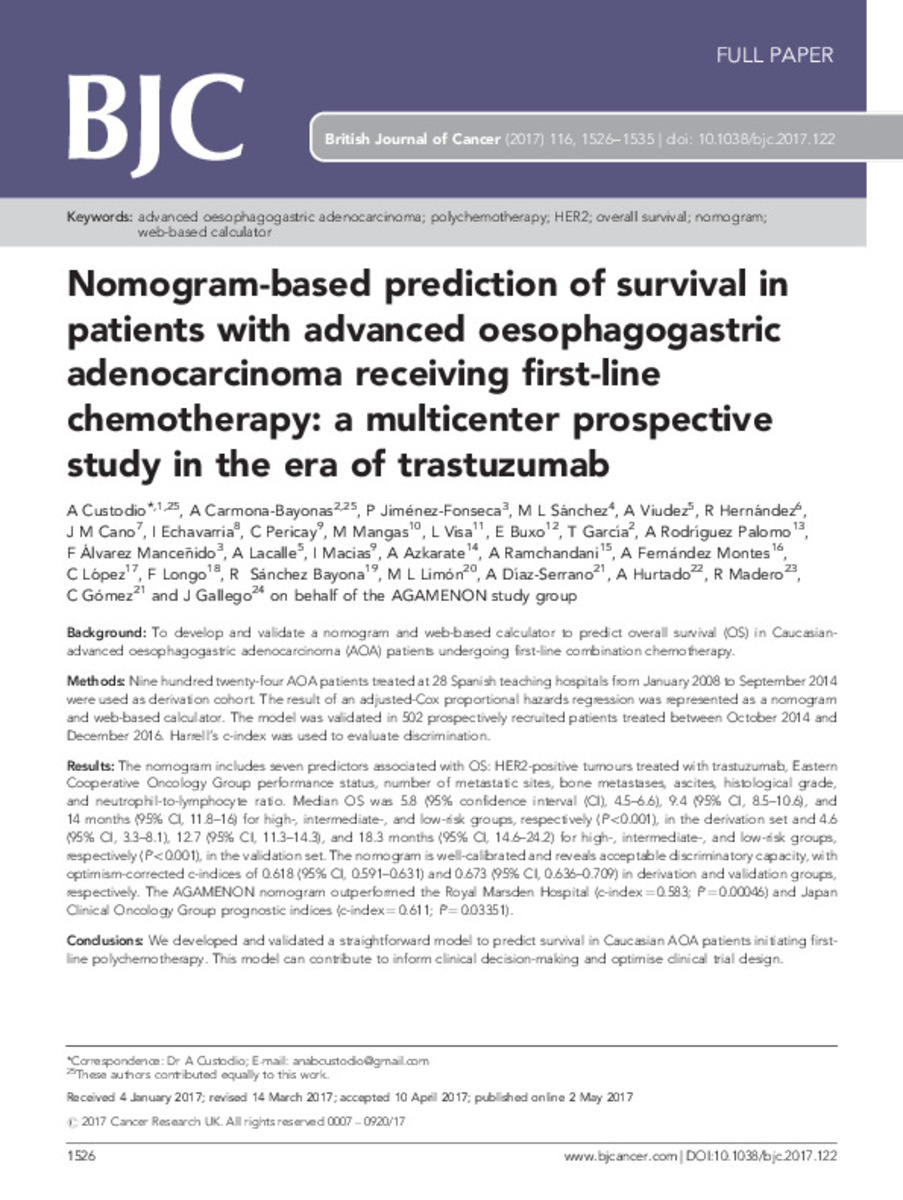Nomogram-based prediction of survival in patients with advanced oesophagogastric adenocarcinoma receiving first-line chemotherapy: a multicenter prospective study in the era of trastuzumab
Keywords:
OS: HER2-positive tumours
Eastern Cooperative Oncology Group
Confidence interval
AGAMENON
Royal Marsden Hospital
Japan Clinical Oncology Group prognostic indices
Median OS
Editorial note:
© 2017 Cancer Research UK. All rights reserved 0007 – 0920/17
Citation:
Sánchez-Lorenzo, M. L. (María Luisa); Custodio, A. (Ana); Carmona-Bayonas, A. (Alberto); et al. "Nomogram-based prediction of survival in patients with advanced oesophagogastric adenocarcinoma receiving first-line chemotherapy: a multicenter prospective study in the era of trastuzumab". British Journal of Cancer. 116, 2017, 1526 - 1535
Statistics and impact
0 citas en

0 citas en

Items in Dadun are protected by copyright, with all rights reserved, unless otherwise indicated.







